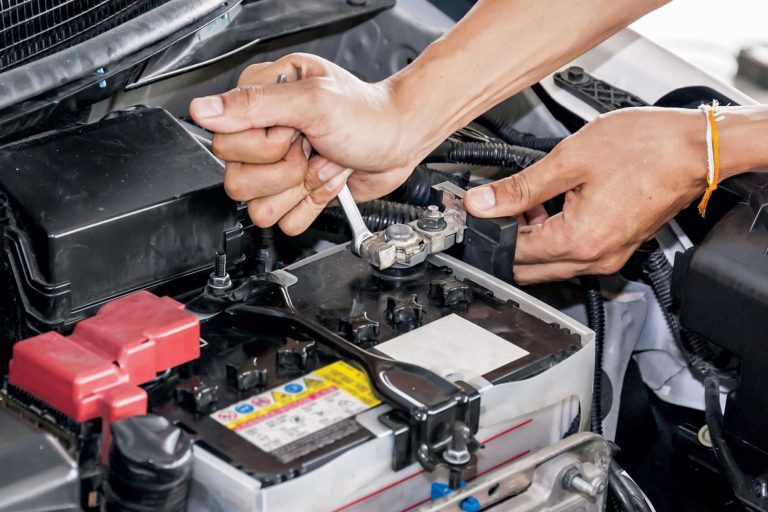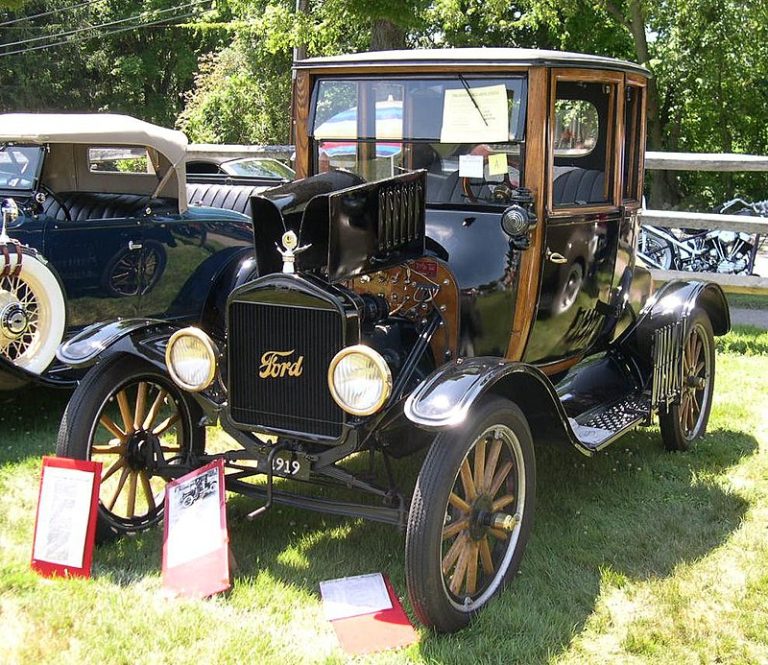How Long Can Gasoline Sit In A Car?
Storing gasoline in a car’s fuel tank over extended periods can lead to various issues, from reduced performance to significant engine problems. Knowing how long gasoline can sit in a car before it goes bad is crucial for maintaining your vehicle’s health and ensuring it runs smoothly. In this guide, we’ll share the shelf life of gasoline when stored in a car’s fuel tank, the factors that affect gasoline degradation, and tips to prevent potential issues from old gasoline.

How Long Can Gasoline Sit In A Car?
Pure gasoline in a car’s tank survives roughly for six months, while ethanol gas lasts up to three months. If you’re using fuel-stabilized gas, expect it to hold for 1 to 3 years. It’s a rule of thumb that remains true, even for small engines, such as lawnmowers and some generators.
Remember, this doesn’t count as the fuel’s total lifetime. The gas at filling stations might already be a month old. Therefore, monitor the age of your vehicle’s fuel more diligently.
Stale gas can cause problems. If you suspect the gas in your vehicle’s tank has passed its prime, siphon it for appropriate disposal. It’s always better to err on the side of safety when dealing with potentially stale gas.
Gasoline does have an expiration date. If your car’s engine has remained dormant for months, the gas in its tank could degrade. So, take note and act accordingly.
Factors Affecting the Lifespan of Gasoline in a Car
Several influences determine the lifespan of gasoline in your vehicle. Try to minimize the impact of these influences and take preventive measures when needed.

Storage Conditions: Adverse storage environments can cause gasoline to degrade faster. Conditions with changing temperatures, such as a car parked outdoors in fluctuating weather, expedite this deterioration. Aim for consistent, cool storage to extend its lifespan.
Presence of Ethanol: Gasoline often contains ethanol, a compound reducing emissions in cars, albeit at the cost of shorter fuel lifespan. Consider your car’s fuel requirements before filling up, as ethanol-free gasoline can last longer if you anticipate lengthy storage times.
Quality of Gasoline: Low-quality gas may not even last a month in your tank. High-quality fuel, however, can exist in a usable state longer.
Fuel Stabilizers: These additives increase gasoline’s lifespan, beneficial if you know your car will be idle for an extended period. However, they’re typically used preemptively – once gas becomes stale, replacement is the only option.
Age of the Car: Your car’s age determines its resilience to lower-quality or aged fuel. Newer vehicle models, with smart, auto-adjusting systems, may handle such fuel better than older ones, experiencing fewer direct issues.
What Happens If I Put Old Gas In My Car?
Using old gasoline in your car can lead to a range of issues, from minor inconveniences to serious engine problems, depending on the age and condition of the fuel. Here’s what can happen if you put old gas in your car:

1. Engine Hard Starting or Failure to Start
Old gasoline loses its volatility due to the evaporation of its lighter components over time. This change can make the gas less combustible, leading to difficulties when starting the engine. In extreme cases, the car might not start at all if the gasoline is sufficiently degraded.
2. Poor Engine Performance
Old fuel can cause the engine to run inefficiently. It might feel sluggish and less responsive. The engine may also hesitate or stumble during acceleration because the compromised fuel does not burn as effectively as fresh gasoline. This can be particularly noticeable when the vehicle is under load or accelerating.
3. Engine Knocking or Pinging
When gasoline breaks down, it can lead to an improper combustion process. This might cause the engine to knock or ping, which is a rattling noise that occurs because the air-fuel mixture in the cylinders is igniting prematurely. Engine knocking can lead to damage over time, particularly to the pistons and other internal components.
4. Clogged Fuel System
As gasoline ages, it can form sticky residues, varnish, and gums. These substances can clog the fuel injectors and fuel filters, restricting fuel flow and reducing the efficiency of the engine. Cleaning or replacing these components can be costly and is a common requirement when old gasoline has been used for extended periods.
5. Corrosion
Old gasoline that has absorbed water, which can happen more easily if the fuel contains ethanol, may lead to corrosion within the fuel system. Water in the fuel can cause rust and other forms of corrosion on metal surfaces, leading to further mechanical issues.
6. Damage to the Catalytic Converter
Using old gasoline can also result in incomplete combustion, which leads to an excess of harmful emissions. These emissions can damage the catalytic converter, an essential component of the vehicle’s exhaust system that reduces toxic gases and pollutants. Replacing a catalytic converter is often expensive.
How to Identify Old Gas?
Once gas ages, its chemical characteristics begin fluctuating, triggering some obvious warning signals. Let’s examine these indicators:

- Check Engine Light: Often, your car’s check engine light flickers on if you’ve got aging gas in the tank. It might burn irregularly, tripping your check engine light. Despite the engine seeming to run smoothly, don’t dismiss this light. It’s time for a professional check-up to pinpoint the issue; prolonging could lead to severe fuel-related predicaments.
- Vehicle Malfunctions: Older gasoline can cause vehicle abnormality: difficulty in starting, idle irregularities, and power losses while driving. If your car exhibits these signs, suspect the gas quality.
- Odor and Appearance: If the questionable gas wasn’t in your car yet, but in a container, use your senses. Aged gas often has a sour, unpleasant smell. Moreover, it appears thick, dark, and muddy, unlike fresh, clean gasoline.
How to Extend the Life of Gasoline in Your Car?
Given the importance of gasoline lifespan, you might wonder how you can prolong its longevity. Here, we present a few strategies.
1. Store Your Vehicle in a Suitable Environment: Cool, dry areas reduce the possibility of water contaminating your fuel and corroding fuel system components. A garage or carport that shields your vehicle from fluctuating weather conditions is a prime example.
2. Limit Air Exposure: Keep your tank filled to curtail air in the tank. This straightforward step can significantly thwart moisture from entering the system.
3. Encourage Fuel Circulation: Regularly driving your vehicle can deter gas degradation, courtesy of the agitation and movement that help to promote circulation within the fuel tank.
4. Avoid Aggressive Driving: Hard accelerations and late braking can negatively influence fuel shelf life, so aim at maintaining a steady pace when out on the road.
5. Minimize Stop-and-Go Traffic and Short Trips: These driving conditions can cause your gasoline to degrade faster. Taking fewer, longer trips can help to extend the life of your fuel.
How to Dispose of Old Gasoline Safely?
Never dispose of old gasoline by pouring it down the drain, on the ground, or in any kind of waterway. It’s a hazardous material that can harm the environment and pollute water sources. Here are the safe ways to dispose of old gasoline:

1. Take it to a Household Hazardous Waste (HHW) Facility:
- This is the most recommended option. Look for HHW facilities in your area. They accept various household hazardous materials, including gasoline.
- Contact your local municipality or waste management department to find the nearest HHW facility and their accepted items list.
- These facilities are specifically equipped to handle and dispose of hazardous waste safely.
2. Use a Certified Gas Station or Auto Parts Store Take-Back Program:
Some gas stations and auto parts stores offer take-back programs for used oil and gasoline. Call ahead to see if they accept old gasoline and what their specific requirements are. They might have limitations on quantity, so be prepared to know how much gas you need to dispose of.
3. Check with the Local Fire Department:
In some cases, your local fire department might also accept old gasoline for disposal. It’s best to call them directly to inquire about their policy.
Frequently Asked Questions
What is the lifespan of gasoline?
Pure gasoline can last about six months, ethanol gasoline up to three months, and fuel-stabilized gasoline can last from 1 to 3 years. The lifespan can significantly depend on the storage conditions.
What happens if I use old gasoline in my car?
Using old gasoline can lead to problems such as decreased performance and potentially severe engine issues. Newer vehicles might be more resilient to such problems, but it’s not advisable to use old gasoline.
How can I extend the life of the gasoline in my car?
You can extend the life of gasoline by storing the vehicle properly, avoiding exposing the gas to air and using fuel stabilizers. Close monitoring of fuel age is also critical.
How should I dispose of old gasoline?
You should ideally contact your local waste management or fire department for guidance on approved disposal sites. Never dispose of it improperly, such as by pouring it into the trash or storage containers.

Hi! I’m Larry Gibbs, studying mechanical engineering with a focus on cars. I really love Ferraris and write blog posts about the latest car stuff. When not studying or blogging, I’m usually on a road trip exploring new places. I also enjoy playing football and watching movies. Life’s an adventure, and I’m all about enjoying the ride!






